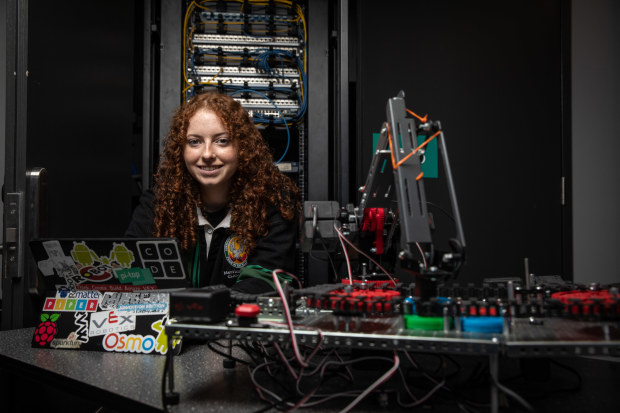Orwell uncut: New Substack will serialize Orwell's writings | AP News.
The thin blue records that opened up musical horizons for Soviet youth Pressing Plant
How a top spy agency is trying to recruit the next generation of spies
Australia’s tech skills shortage and tight labour market are having reverberations within our top spy agencies, which are finding innovative ways to recruit a future generation of cyber spies.
The Australian Signals Directorate has sponsored hundreds of high school students to participate in a national cyber defence competition called CyberTaipan – modelled on a US Air Force Association program – in the hope of luring the country’s smartest teenagers into the world of cyber espionage.

Year 12 student Ella Stewart’s dream job is empowering women to pursue STEM. Paul Harris
“There’s a stack of stuff that we do to play our part in making sure that we’re contributing to the nation’s growth of people with tech-savvy skills, but particularly women,” said Rachel Noble, director-general of the ASD.
The ASD has said it is on track to fill the 1900 new roles over a decade that it announced earlier this year, but the growing severity and frequency of cyber threats mean Australia is still expected to need increasing numbers of spies.
The importance of cyber spies in Australia’s national security framework has become increasingly evident in recent weeks, with Optus, Woolworths and Medibank Privatefalling victim to cyberattacks.
A glaring problem in filling the gap in expertise is a lack of women in the field. According to the National Skills Commission, women make up just 21 per cent of the cyber workforce.
Ms Noble said sponsoring the CyberTaipan competition had helped get more girls interested in cyber, with the competition having a “record high” percentage of female competitors. That amount is still only 22 per cent, however.
Breaking the stereotype
Ella Stewart, 17, is one of the female participants in the CyberTaipan competition. Among a pool of almost 800 participants, she has reached the competition’s final, which is being held this weekend.
During the competition, she learnt basic cybersecurity skills and how to work in a team through tasks such as encrypting files and configuring Microsoft Windows security strategies.
The year 12 student, who attends Merrimac State High School, said the lack of girl participants in CyberTaipan was probably because many believed male students were better at technology tasks.
“A lot of girls think that ‘you’re not going to beat them, so you’re not going to try’ even though there’s no difference,” she said.
After finishing high school this year, Ella plans to study computer science and engineering at university. She then hopes to teach engineering and robotics to younger women, and encourage them to enter a STEM career.
Outside of CyberTaipan, the ASD is providing cyber training to 210 women across all levels. It has also provided 30 technical cyber training scholarships for women and created a new women-in-security mentor program that had 110 mentors and mentees over the past 12 months.
Ms Noble said there was still a long way to go to get women into cyber, but things were headed in the right direction. It was a positive sign that both the ASD and its Australian Cyber Security Centre, headed by Abigail Bradshaw, were led by women.
ASD’s graduate intakes over the past two years have also reached gender parity, with women comprising 47 per cent of graduates in 2021 and 52 per cent in 2022.

